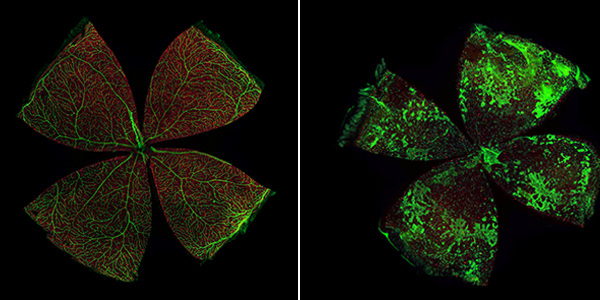Iuvone Research Group
The problems we tackle
Research in the Iuvone lab focuses on several inter-related areas, all impacting visual function and dysfunction. A major research focus is investigating the roles of dopamine, melatonin and circadian clocks in the retina. Iuvone and his colleagues have shown that circadian clocks, dopamine and melatonin regulate the ability to light- and dark-adapt in a time-of-day dependent fashion, regulate contrast sensitivity in a time-of-day dependent fashion, control the sensitivity to light-induced retinal degeneration, regulate the daily rhythm of photoreceptor outer segment disc shedding and phagocytosis by retinal pigment epithelial cells, regulate the vascular development of the eye, and influence the development of myopia (near sightedness).
The approach we take
The Iuvone lab uses multiple approaches to study retinal function, including behavioral analyses of visual acuity and contrast sensitivity, biochemical assessment of gene and protein expression, and a variety of imaging techniques.
Recent research

Atypical Opsins and the OIR Model of Retinopathy of Prematurity
- Sponsors: National Institutes of Health
- Collaborator(s): Cincinnati Children’s Hospital Research Foundation
Retinopathy of prematurity (ROP) is a vaso-proliferative eye disease characterized by abnormal retinal vessel growth in premature neonates. Neuropsin and melanopsin, atypical photopigments found in retinal ganglion cells, regulate circadian rhythms and ocular vascular development. We seek to develop a non-invasive approach to treat or prevent retinopathy of prematurity by selectively stimulating these opsins with specific wavelengths of light.
The Underlying Mechanisms of Visual Impairment and Myopia in Prematurity
- Sponsor(s): National Institutes of Health
- Collaborator(s): Oakland University Eye Research Institute
This project investigates the roles of retinal waves and dopamine in the development of an atypical form of myopia in ROP.


